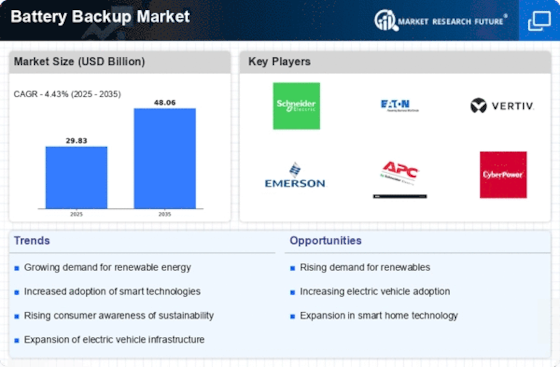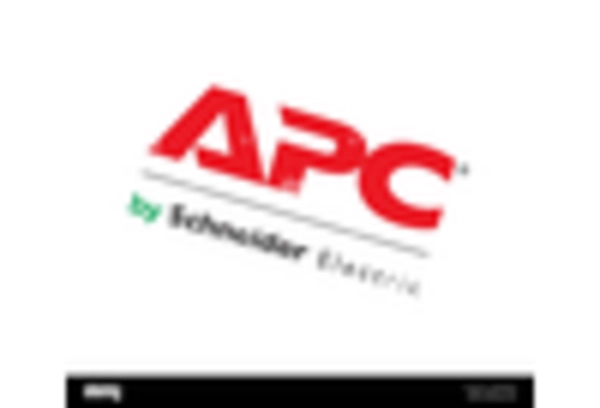Government Incentives and Support
Government incentives and support for energy storage solutions are emerging as a key driver in the Battery Backup Market. Various governments are implementing policies and programs aimed at promoting the adoption of battery backup systems, particularly in residential and commercial sectors. These initiatives often include tax credits, rebates, and grants that encourage consumers to invest in energy storage technologies. As regulatory frameworks evolve to support renewable energy integration, the demand for battery backup systems is expected to rise. Market analysis suggests that such government support could lead to a substantial increase in market penetration, further propelling the growth of the Battery Backup Market.
Rising Awareness of Energy Efficiency
Rising awareness of energy efficiency is driving growth in the Battery Backup Market. Consumers and businesses are increasingly recognizing the importance of energy conservation and the role that battery backup systems play in achieving this goal. Energy-efficient solutions not only reduce electricity bills but also contribute to environmental sustainability. As a result, there is a growing trend towards the adoption of battery backup systems that offer energy-saving features. Market data indicates that energy-efficient battery systems are expected to capture a significant share of the market, as consumers seek to minimize their carbon footprint while ensuring reliable power supply. This trend is likely to propel the Battery Backup Market forward.
Integration of Renewable Energy Sources
The integration of renewable energy sources into the power grid is significantly influencing the Battery Backup Market. As more consumers and businesses adopt solar and wind energy, the need for effective energy storage solutions becomes paramount. Battery backup systems play a crucial role in storing excess energy generated during peak production times for use during low production periods. This trend is expected to drive the battery backup market, with estimates suggesting that the energy storage market could reach USD 200 billion by 2026. The Battery Backup Market is thus positioned to benefit from the growing emphasis on sustainable energy practices and the need for reliable energy storage solutions.
Technological Innovations in Battery Technology
Technological innovations in battery technology are reshaping the Battery Backup Market. Advancements in lithium-ion and solid-state batteries are leading to improved energy density, longer life cycles, and faster charging times. These innovations not only enhance the performance of battery backup systems but also reduce costs, making them more accessible to a broader range of consumers. The market is witnessing a shift towards smart battery systems that can communicate with other devices, optimizing energy usage and enhancing user experience. As these technologies continue to evolve, the Battery Backup Market is likely to see increased adoption across various sectors, including residential, commercial, and industrial applications.
Increasing Demand for Uninterrupted Power Supply
The rising demand for uninterrupted power supply is a primary driver in the Battery Backup Market. As businesses and households increasingly rely on electronic devices, the need for reliable power sources has surged. According to recent data, the market for battery backup systems is projected to grow at a compound annual growth rate of approximately 8% over the next five years. This growth is fueled by the increasing frequency of power outages and the critical need for continuous operation in sectors such as healthcare, telecommunications, and data centers. The Battery Backup Market is thus witnessing a shift towards more robust and efficient solutions that can ensure operational continuity during power disruptions.


















Leave a Comment